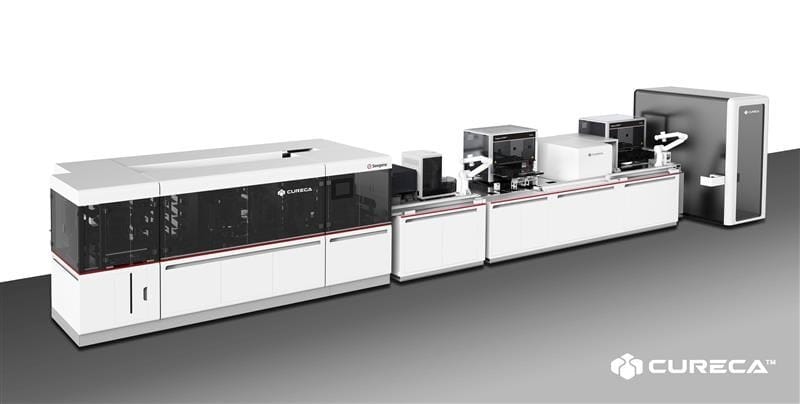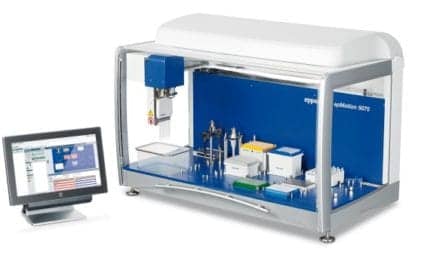A fully automated system and clinical analytics platform showcased at ADLM 2025 aim to improve workflow efficiency and support infection trend tracking.
Seegene Inc unveiled its fully automated PCR testing system, CURECA, and its data analytics platform, STAgora, at ADLM 2025.
CURECA fully automates the entire PCR testing process—from sample storage and pre-treatment to nucleic acid extraction, amplification, and result analysis—without any human intervention. Designed for 24/7 continuous operation, the system is designed to minimize human error and improve the consistency and reliability of the test results.
Its fully automated prep module addresses one of the most burdensome and error-prone stages in laboratory workflows. Pre-treatment has traditionally been a major challenge, particularly when dealing with diverse sample types such as urine, blood, sputum, and stool. Lab technicians often carry out repetitive manual tasks over extended hours, and variations in skill level can result in inconsistent outcomes. Stool samples, especially, have posed serious automation barriers due to their high viscosity and particulates, requiring heavy manual handling.
The prep module of CURECA system fully automates pre-treatment process across all major sample types. This aims to reduce labor demands, expand sample throughput, and enhance overall operational and cost efficiency.
In addition, the prep module of CURECA system is applicable beyond PCR diagnostics. It supports pre-treatment for other disciplines, including clinical chemistry and immunoassays. Its modular architecture allows for flexible configuration and deployment tailored to the size, layout, and needs of each laboratory.
Seegene’s Statistical Platform
STAgora is Seegene’s statistical platform that collects and analyzes real-time PCR diagnostic data to support clinical decision-making. By aggregating test data uploaded from hospitals, the platform aims to provide integrated insights into regional infection trends, hospital-level positivity rates, and patterns of co-infection. It also offers more than 40 statistical tools tailored for clinical support.
With STAgora, healthcare providers can compare individual patient test results with local and regional epidemiological data. The platform allows clinicians to evaluate infection trends at both patient and community levels.
Expanding Global Collaboration via Technology Sharing and Partnerships
Building on its presence at ADLM 2025, Seegene aims to broaden access to CURECA and STAgora by offering early pilot experiences and establishing new global partnerships.
Earlier this year, CURECA attracted interest at ESCMID Global 2025. To strengthen its research and development and manufacturing capacity in the United States, Seegene has established local subsidiaries, including Seegene Technologies and Seegene CURECA.
“CURECA and STAgora are more than just diagnostics instrument or software—they represent a new global standard that will redefine diagnostics in clinical settings around the world. We will continue to share the many technological assets we’ve built over the years, and based on this, we are committed to driving fundamental innovation across the global diagnostics ecosystem,” says Daniel Shin, executive vice president and chief of global sales and marketing at Seegene, in a release.
Photo caption: CURECA
Photo credit: Seegene





